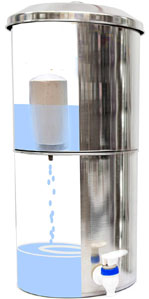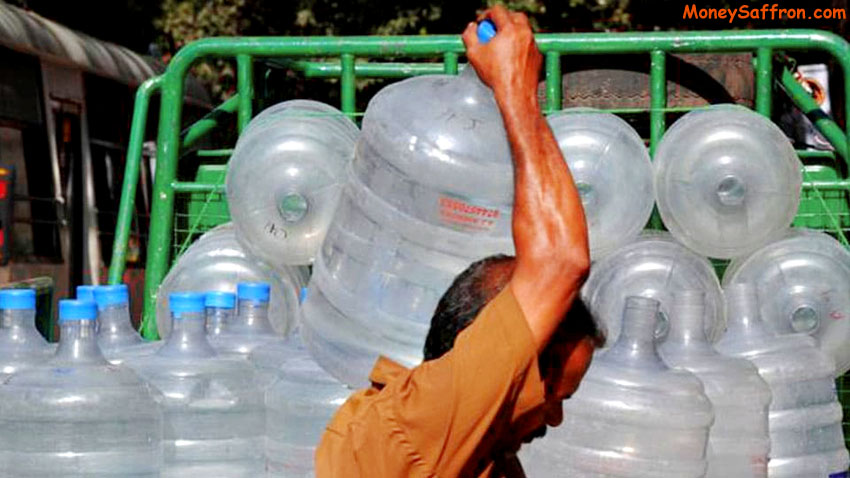In our busy lives, convenience often wins over caution, especially with water consumption. Many homes, offices, and public places use 20-liter water jars daily. Though advertised as safe and convenient, these jars can be harmful. This article explores the risks of using 20-liter water jars and why you might want to think twice about using them.
1. Contamination Risks
One of the most significant dangers of 20-litre water jars is the risk of contamination. Despite being marketed as purified, these jars can harbor harmful bacteria and pathogens. Contamination can occur at various stages, from manufacturing to final delivery.
a. Manufacturing and Bottling Process
The water bottling process is not always as hygienic as it appears. Poorly maintained machinery, inadequate sterilization, and improper handling can introduce contaminants into the water. Even if the water is initially purified, it can be contaminated during the bottling process.
b. Storage and Transportation
Water jars are often stored in unsanitary conditions and exposed to extreme temperatures. This can lead to the growth of bacteria and other microorganisms. Additionally, transportation in non-refrigerated vehicles can exacerbate the problem, especially in hot climates.
c. Reused and Recycled Jars
Many 20-litre water jars are reused multiple times. While this might seem environmentally friendly, it increases the risk of contamination. Each reuse can introduce new bacteria, and harmful pathogens can thrive if the jars are not properly cleaned and sterilized between uses.
2. Chemical Leaching
Another critical health concern is the leaching of chemicals from the plastic used in the water jars. Most 20-litre jars are made from polycarbonate plastic, which can release harmful substances into the water over time.
a. Bisphenol A (BPA)
Bisphenol A, often referred to as BPA, is a compound utilized in manufacturing polycarbonate plastics. BPA can leach into the water, especially when the jars are exposed to high temperatures. BPA is an endocrine disruptor, which means it can interfere with hormone function, potentially leading to health issues such as reproductive disorders, heart disease, and cancer.
b. Phthalates
Phthalates are another group of chemicals that can leach from plastic containers. They are used to make plastics more flexible, but can have adverse health effects when ingested. Phthalates have been linked to hormonal imbalances, reproductive issues, and developmental problems in children.
3. Microplastics
Microplastics are tiny plastic particles that can contaminate drinking water. Studies have shown that plastic bottles, including 20-litre water jars, can shed microplastics into the water. These particles are not visible to the naked eye but can pose significant health risks.
a. Health Implications
Microplastics can accumulate in the body and potentially cause various health problems. They have been associated with inflammation, toxicity, and even carcinogenic effects. Moreover, microplastics can act as carriers for other harmful chemicals and pollutants, further increasing their potential health impact.
4. Biofilm Formation
Biofilms are slimy layers of bacteria that can form on surfaces, including the interior of water jars. Once established, biofilms are challenging to remove and can continuously release bacteria into the water.
a. Resistant Bacteria
Biofilms can harbor antibiotic-resistant bacteria, making infections more difficult to treat. Regular cleaning and sterilization of water jars are crucial, but biofilms can persist even with rigorous cleaning efforts.
5. Inconsistent Quality Standards
The quality standards for packaged drinking water vary widely, and not all companies adhere to strict regulations. In some regions, regulatory oversight is lax, allowing substandard products to enter the market.
a. Unregulated Sources
Some companies may source water from unregulated and potentially contaminated sources. Without proper filtration and purification, the water can contain harmful chemicals, heavy metals, and pathogens.
6. TDS (Total Dissolved Solids) Levels
TDS, or Total Dissolved Solids, refers to the combined content of all inorganic and organic substances in water. While a certain level of TDS is acceptable, excessively high or low levels can be problematic.
a. High TDS Levels
High TDS levels indicate a significant presence of minerals and salts, which might include harmful substances like lead, arsenic, and nitrates. Consuming water with high TDS can lead to various health issues, including kidney stones, hypertension, and other cardiovascular problems.
b. Low TDS Levels
Conversely, water with very low TDS levels might lack essential minerals that are beneficial for health. Long-term consumption of demineralized water can lead to mineral deficiencies and associated health problems.
7. Chlorine and Disinfection Byproducts
Chlorine is commonly used to disinfect water, but its presence in drinking water can have adverse health effects, especially when it forms harmful byproducts.
a. Chlorine
While chlorine is effective in killing bacteria and other pathogens, its consumption in large amounts can cause health issues such as respiratory problems and an increased risk of bladder and rectal cancer. Additionally, the taste and odor of chlorinated water can be unpleasant.
b. Disinfection Byproducts (DBPs)
When chlorine interacts with organic substances present in water, it generates disinfection byproducts (DBPs) like trihalomethanes (THMs) and haloacetic acids (HAAs). These byproducts are potentially carcinogenic and have been linked to liver, kidney, and central nervous system problems.
8. Bones, Joints, and Weakness
Long-term consumption of contaminated or chemically altered water can have severe implications on bones and joints, muscle stiffness, the sensation of pain, muscle tightness leading to weakness, and other health issues.
a. Fluoride Contamination
Excessive fluoride levels in drinking water, sometimes found in recycled water jars, can lead to a condition known as fluorosis. Skeletal fluorosis causes joint stiffness and pain, as well as the weakening of bones. Which makes you feel weaker and weaker in your daily life activities.
b. Lack of Essential Minerals
Water with low TDS levels can lack essential minerals such as calcium and magnesium, which are crucial for bone health. Prolonged consumption of such water can contribute to osteoporosis, making bones brittle and more prone to fractures.
c. Chronic Weakness
Contaminants such as heavy metals and chemicals in water can lead to chronic weakness and fatigue. They can interfere with nutrient absorption and metabolism, causing a general decline in physical health and energy levels.
9. Improper Handling and Usage
The way 20-litre water jars are handled and used can also impact their safety. Improper handling can introduce contaminants and compromise water quality.
a. Dirty Dispensers
Water dispensers, if not cleaned regularly, can become breeding grounds for bacteria and mold. Every time the jar is replaced, there is a risk of introducing contaminants from the dispenser to the water.
b. Hand Contact
Touching the rim or mouth of the jar can transfer bacteria and other pathogens from the hands to the water. It’s essential to handle water jars with clean hands and avoid direct contact with the parts that come into contact with the water.
10. Environmental Impact
While not directly related to health, the environmental impact of using 20-litre water jars cannot be ignored. The production, transportation, and disposal of plastic jars contribute to environmental pollution, which indirectly affects public health.
a. Plastic Waste
Plastic waste from discarded water jars contributes to land and marine pollution. Microplastics from degrading plastic can enter the food chain, affecting both human and animal health.
b. Carbon Footprint
The carbon footprint associated with the production and transportation of 20-litre water jars is significant. This contributes to climate change, which has far-reaching health implications, including increased respiratory problems and the spread of infectious diseases.
Safer Alternatives
Given the potential health risks associated with 20-litre packaged water jars, it’s crucial to consider safer alternatives for drinking water.
a. Home Water Purification Systems
Investing in a high-quality home water purification system can provide safer and more convenient access to clean drinking water. Options include reverse osmosis, UV purification, and activated carbon filters, which can effectively remove contaminants, including chlorine and TDS.
b. Ceramic Candle Water Filters
 Ceramic candle water filters are a cost-effective and eco-friendly option for filtering water. These filters use a ceramic cartridge to remove bacteria, sediment, and other impurities from the water. The porous nature of the ceramic material permits water to flow through while capturing contaminants. Some ceramic filters are also treated with silver to enhance their antibacterial properties.
Ceramic candle water filters are a cost-effective and eco-friendly option for filtering water. These filters use a ceramic cartridge to remove bacteria, sediment, and other impurities from the water. The porous nature of the ceramic material permits water to flow through while capturing contaminants. Some ceramic filters are also treated with silver to enhance their antibacterial properties.
c. Glass or Stainless Steel Containers
Using glass or stainless steel containers for storing and transporting water can eliminate the risk of chemical leaching and reduce the environmental impact. These materials are non-reactive and do not release harmful substances into the water.
d. Regular Testing
Regular testing of tap water and purification systems can ensure that the water you consume is free from harmful contaminants. Many municipalities offer water testing services, and home testing kits are also available.
Conclusion
While 20-litre packaged water jars offer a convenient solution for accessing drinking water, they come with hidden dangers that can pose significant health risks.
Contamination, chemical leaching, microplastics, biofilm formation, inconsistent quality standards, improper handling, high or low TDS levels, chlorine-related issues, and adverse effects on bones and joints are all factors that can compromise the safety of the water you consume.
Additionally, the environmental impact of using plastic water jars cannot be overlooked, by understanding these risks and opting for safer alternatives, such as you can consider.




What a great post! Your explanations are so straightforward and simple that even the most complicated parts of the subject are easy to understand. Your examples were really useful and practical. Your time and insight are much appreciated.
Somebody essentially lend a hand to make significantly articles Id state That is the very first time I frequented your website page and up to now I surprised with the research you made to make this actual submit amazing Wonderful task.
Simply desire to say your article is as surprising. The clearness in your post is simply excellent and I could assume you are an expert on this subject. Fine with your permission let me to grab your feed to keep up to date with forthcoming post. Thanks a million and please carry on the gratifying work.
Attractive section of content. I just stumbled upon your blog post and in accession capital to assert that I get actually enjoyed account your article.
Hey there, You have done a fantastic job. I will certainly digg it and personally recommend to my friends. I’m confident they’ll be benefited from this site.